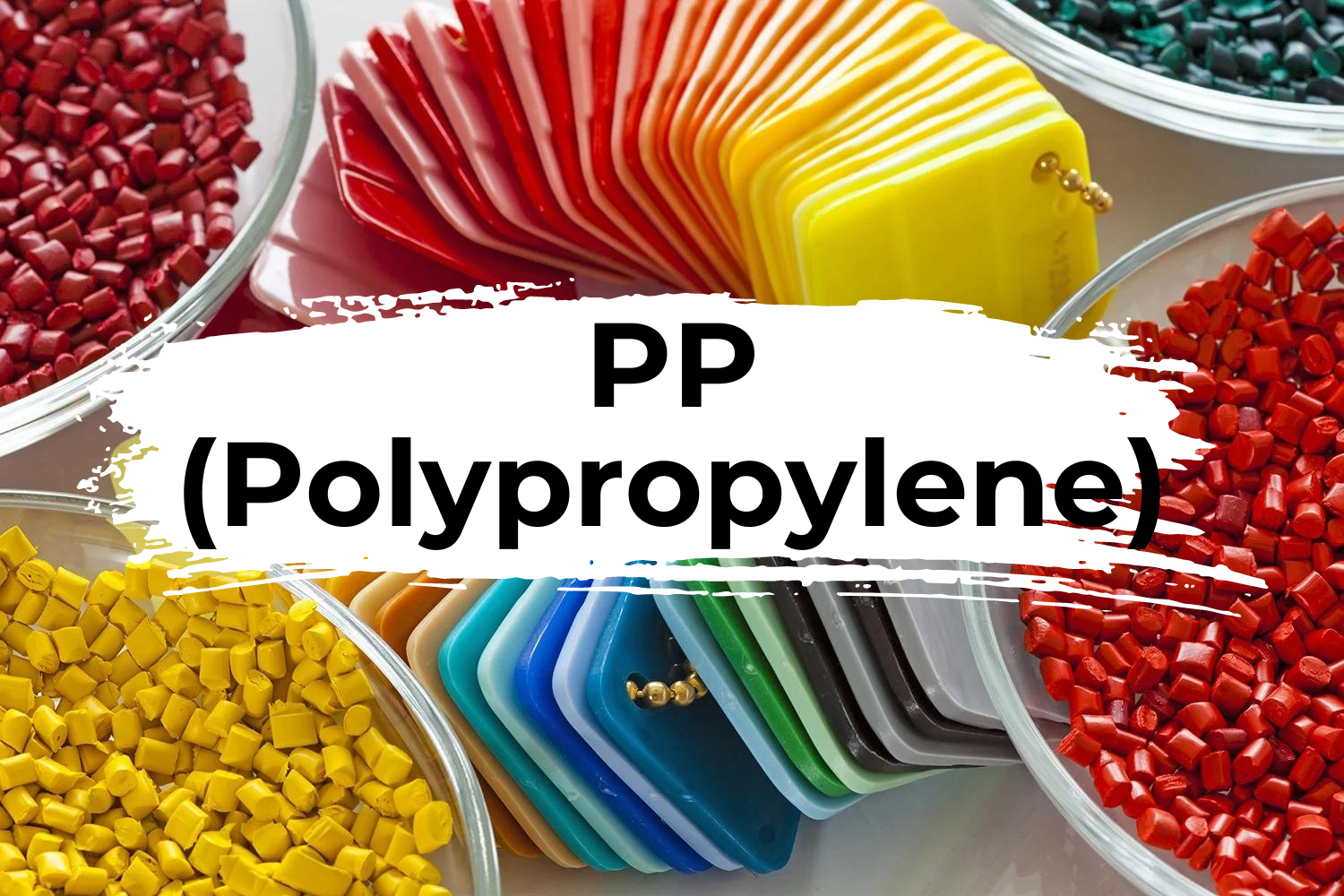PP plastic is a synthetic polymer widely used in many areas of life. Thanks to superior properties such as high durability, water resistance, good heat resistance, PP has become an indispensable material in the production of a variety of products. So what is PP plastic? Is it toxic? And what properties make PP plastic popular and widely used in everyday life? Let's learn details about PP plastic with EQUO in this article!
1. Overview of PP plastic
PP plastic is one of the most popular and versatile plastics on the market today. With special properties and outstanding advantages, PP plastic has been widely applied in many different areas of daily life, from production to consumer life.
1.1. Definition of PP plastic
PP plastic, or Polypropylene, is a widely used polymer found in various everyday items. Renowned for its durability, hardness, heat resistance, and corrosion resistance, PP plastic is among the most favored plastics globally.

Source: Internet
Its versatility finds application in packaging, household appliances, medical products, toys, and daily utensils, among others.
>> Read More:
- Recycling Plastic Waste
- PLA Plastic: Everything You Need to Know
- 10+ Alternative Materials to Plastic: Perfect Solutions for the Environment and Humanity
- 20+ Recycled Plastic Straw Ideas: Simple and Easy to Do
- 10 DIY Plastic Straw Toys For Kids
1.2. Properties of PP plastic
PP plastic has the following properties:
- High hardness and durability.
- Has relatively high heat resistance (more than 100 degrees Celsius).
- Has high elasticity and bendability.
- Resistant to water vapor, grease, and gases.
- Able to recover after impact.

Source: Internet
1.3. Is PP plastic toxic?
While PP plastic is often touted as non-toxic and FDA-certified for food contact, it's essential to note that this material isn't without its drawbacks. While it may be chemically inert, meaning it doesn't readily react with other substances to produce toxins, there are still concerns.
Despite its widespread use in everyday items ranging from household appliances to medical products and food packaging, PP plastic isn't entirely free from potential issues. For instance, while it doesn't contain harmful substances like bisphenol A (BPA) or phthalates, it can still leach chemicals under certain conditions, especially when exposed to heat or acidic substances.

Source: Internet
Additionally, while PP plastic is technically recyclable, its recycling rate remains relatively low compared to other plastics due to challenges in the recycling process. Its low density also means it can easily float and contribute to marine pollution if not disposed of properly.
Furthermore, while PP plastic may break down over time, it does so very slowly, contributing to environmental pollution in the form of microplastics. Therefore, while PP plastic may have its advantages, it's crucial to consider its limitations and environmental impact when assessing its overall suitability for various applications.
2. How isPP plastic produced?
PP plastic is produced through two main methods:
2.1. Ziegler-Natta polymerization
Raw material: Propene (C3H6)
Catalyst: Ziegler-Natta
Procedure:
- Propene is introduced into the reactor along with the Ziegler-Natta catalyst.
- Under appropriate temperature and pressure, propene will polymerize to form polypropylene.
- The resulting polypropylene is cooled, degassed, and cut into granules.
2.2. Metal-catalyzed polymerization (Metallocene catalysis polymerization)
Raw material: Propene (C3H6)
Catalyst: Metal (such as titanium, zirconium)
Process: Similar to the Ziegler-Natta method, but using a metal catalyst. This method allows for better control of the molecular structure of polypropylene.
3. Advantages and disadvantages of PP plastic
Thanks to outstanding advantages such as high durability, water and chemical resistance, and low price, PP plastic is used in many different fields such as packaging production, household appliances, automobile components, textiles, etc. However, besides the advantages, PP plastic also has some disadvantages that need to be kept in mind when using it.
3.1. Advantages of PP plastic
- Light: PP plastic has a low density, only 0.91 g/cm³, lighter than many other plastics such as ABS, PS, and PVC.
- Durable: PP plastic has high mechanical strength, withstands impact well, and does not crack easily.
- Waterproof: PP plastic has good water resistance and does not deform when exposed to water.
- Chemical resistance: PP plastic is resistant to many chemicals, acids, and bases.
- Safe for health: PP plastic is certified by the FDA (US Food and Drug Administration) as safe for health, and can be used to store food and beverages.

Source: Internet
3.2. Disadvantages of PP plastic
- Low heat resistance: PP plastic can only withstand maximum temperatures up to 100°C, and is easily deformed when exposed to high temperatures.
- Poor fire resistance: PP plastic is easy to catch fire and spreads.
- Difficult to print: PP plastic has difficulty adhering to ink, so surface treatment is required before printing.
- Non-biodegradable: The majority of products made from PP plastic from its early days still remain on our planet. They are often challenging to recycle, and most end up discarded in landfills. These plastics can persist here for decades to hundreds of years before breaking down into microplastics, continuing to have a severe impact on health and the environment.
When choosing PP plastic, prioritize products with clear origins and good quality. Although PP plastic has many advantages, at the same time there are still many disadvantages. Plant-based products are still the optimal choice for the environment. If possible, prioritize using plant-based products to best protect the environment.
4. Applications of PP plastic in life
From simple water bottles to colorful children's toys or useful household items, PP plastic penetrates every corner and brings practical conveniences to consumers.
4.1. Water bottles, containers, and food packaging
Producing products such as water bottles, containers, and food packaging using PP plastic is a common application of this plastic. PP plastic is used in the production process as the main raw material because it can create products that are durable, waterproof, and easy to reuse. PP plastic products are designed and manufactured using advanced technological processes to meet a variety of market needs, from convenient daily water bottles to high-quality food containers and packaging.

Source: Internet
Nevertheless, the lifecycle of PP plastic products raises concerns among consumers, especially considering their near non-biodegradability. The use of PP plastic products, particularly single-use items, exacerbates plastic pollution and impacts the environment.
As a result, many consumers believe that products sourced from natural materials, free from plastic and capable of biodegradation, will be safer for both health and the environment compared to synthetic products. These products are seen as the most sustainable and preferable alternatives to plastic-based products.
EQUO: Product line of natural ingredients, the perfect solution to replace plastic
EQUO offers a variety of environmentally friendly products that accompany you and help you easily replace disposable plastic products in your daily life.
EQUO products are made from 100% natural materials, do not contain plastic, and can biodegrade within 3-6 months:
- Plant-based straw set that decomposes itself: Made from coffee, bagasse, coconut, grass, and rice, safe for health, and completely compostable in the natural environment.
- Food containers: Made from sugarcane bagasse, which is a sustainable natural resource that is renewable and decomposes quickly. The outstanding characteristics of bagasse fiber lie in its durability, flexibility in packaging, and breathable and waterproof qualities.
- Utensils: This is a great choice for eco-friendly and durable tableware sets.
- Paper cups and lids with water-based coating: Using a water-based coating, instead of plastic (PP, PE, or PLA), helps the production process emit less carbon dioxide (CO2) and minimizes negative impacts on the environment during decomposition compared to regular paper cups. These cups completely decompose in the natural environment within 18 weeks and come in various sizes, suitable for a wide range of uses.
Let's join hands with EQUO to use environmentally friendly products. For more information about EQUO product lines, please visit the following link:
>> https://shopequo.com/collections

4.2. Household appliances
PP plastic is often widely used in the production of common household appliances. PP plastic products include sinks, trays, baskets, and many other household essentials. PP plastic is popular because of its flexibility, durability, and heat resistance, along with diversity in design, creating convenience and versatility for daily use.

Source: Internet
4.3. Children's toys
PP plastic is often used to produce toys such as dolls, cars, building blocks, and intelligence training toys. Some puzzles or building blocks are made from PP plastic, with high durability and good impact resistance, helping children develop construction and creativity skills safely.

Source: Internet
4.4. Textile materials
PP fabrics are lightweight, durable, waterproof, and abrasion-resistant, making them suitable for the production of workwear, bags, seat covers, and other textile products. In addition, PP plastic fibers can also be used in direct weaving or non-woven processes to create diverse and high-quality textile products.

Source: Internet
4.5. Cars
One of the main uses of PP plastic in automobile manufacturing is in the production of interior and exterior parts. For example, PP plastic is used to produce details such as dashboards, door handles, headlights, seat backs, and many other details.

Source: Internet
PP plastic appears everywhere in modern life, from simple items such as water bottles and lunch boxes to more complex products such as medical equipment and car components. Thanks to its flexibility, diversity, and utility, PP plastic has become an indispensable material in many industries.
With the information from this article, EQUO hopes you have an overview of PP plastic and can apply it intelligently and protect the environment. Besides the benefits, the use of PP plastic also needs to be carefully considered. Improper disposal of PP plastic can pollute the environment and affect human health. Therefore, we need to use PP plastic responsibly and promote recycling and treatment of plastic waste to protect our living environment. Always choose and use products responsibly, and accompany EQUO on the path to building a more sustainable and safer living environment.



1 comment
Is pp plastic considered safe to use in an electric water kettle liner where boiling water comes in contact with the plastic and the water is used to brew tea or coffee?